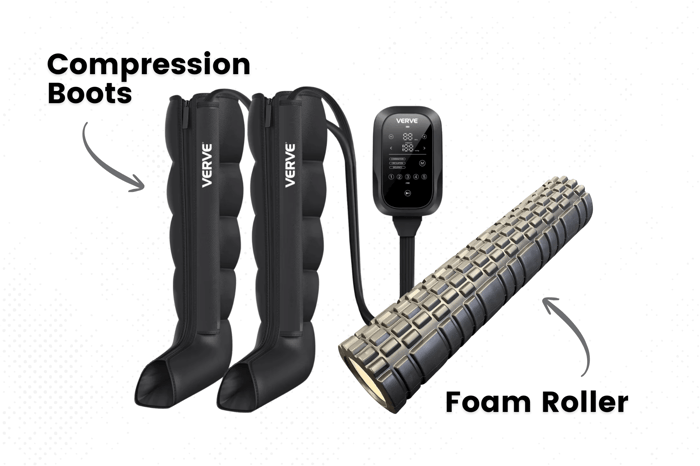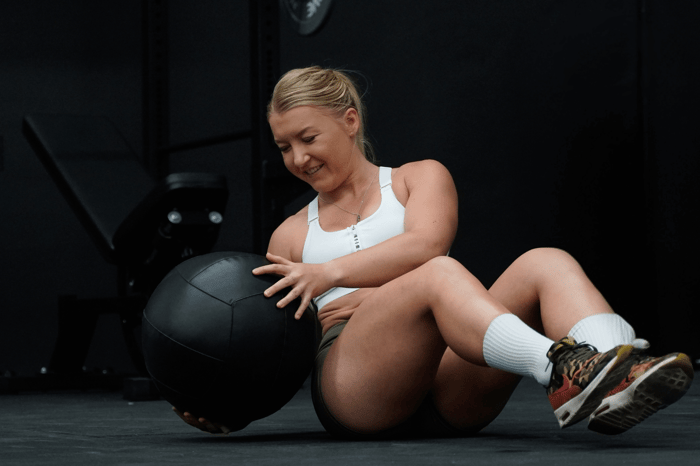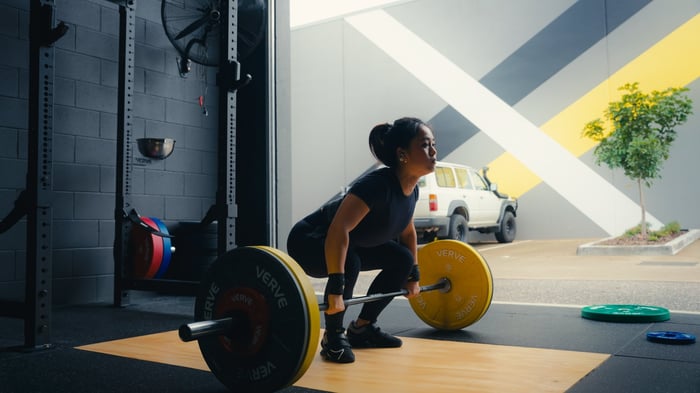Training hard is just half the equation. Recovery does the rest.
If you’re constantly sore, tight, or struggling to bounce back after training, it’s not because you’re not working hard enough. It might be because you’re not recovering smart enough.
Recovery is where your gains actually happen. And while soreness is normal, it shouldn’t be your permanent state. The truth? You might be using the wrong recovery tool for your training, or not using one at all.
Here’s a look at two of the most effective recovery tools: foam rollers and compression boots, and how to choose the best recovery tool for your training and recovery needs.
Foam Rollers: Fast, Targeted Relief
If you’ve ever seen someone grimacing on a foam roller, that’s because it works. Foam rolling is a form of self-myofascial release. It helps break up tightness in your muscles and fascia using your own bodyweight.
Best For:
- Tackling sore or tight muscle groups
- Quick post-training recovery sessions
- Pre-workout warm-ups to improve range of motion
When to Use It:
- Right after training to release muscle tension
- Before sessions to improve mobility
- Daily, especially if you sit or stand for long periods
Why It Works:
Foam rolling increases blood flow, reduces stiffness, and improves flexibility. It’s perfect when you want to get into specific areas, like your IT band, glutes, or calves, and don’t mind doing the work yourself.
💡 Pro Tip: Not all rollers are created equal. Firmer rollers or textured surfaces can give deeper release for seriously tight spots.
Recovery Boots: Passive, Deep Recovery
Recovery boots are the lazy but smart athlete’s dream. Just zip in, press start, and let the boots use air compression to flush out muscle fatigue, reduce soreness, and improve circulation.
Best For:
- Full-leg recovery after tough sessions
- HYROX race prep or cooldown
- Passive recovery on rest days or in the evening
When to Use Them:
- A few hours after training, once your heart rate has stabilised
- On heavy leg days, endurance sessions, or long runs
- Anytime you want to relax while still actively recovering
Why They Work:
Compression mimics the muscle pump of movement. It helps clear metabolic waste and improves nutrient delivery without you lifting a finger.
💡 Pro Tip: Use them while watching TV or working. It’s recovery without losing time.
So, Are You Using the Right Tool?
It all depends on your training, time, and how your body feels. Here’s a quick comparison:
| Recovery Tool | Foam Roller | Recovery Boots |
|---|---|---|
| Effort Level | Active (you apply pressure) | Passive (hands-free) |
| Target Area | Local muscle groups | Entire legs |
| Ideal For | Tight spots, mobility, cooldowns | Deep recovery, heavy training loads |
| Session Time | 5–15 minutes | 20–45 minutes |
| Portability | Gym bag-friendly | Best for home or studio use |
The Smart Move? Use Both
Here’s how high-performers combine the two:
👉 Use a foam roller right after training to ease tightness and keep muscles supple
👉 Use recovery boots later in the day or on rest days for a full reset
Together, they’ll help you:
✅ Train harder
✅ Recover faster
✅ Stay consistent
✅ Avoid burnout and injury
Foam Roller
$29
Foam Roller A foam roller is an essential piece of mobility and warm-up equipment that is a must have in any commercial or home gym setup. When combined with active warm-ups, a foam roller will massage and prepare any muscle area for lifting with… read more |
VERVE Compression Recovery Boots
$799
VERVE Air Compression Recovery Boots Take your recovery to the next level with the VERVE Air Compression Recovery Boots, designed to enhance circulation, reduce muscle fatigue, and support faster recovery. Whether you’re an elite athlete or a fitness enthusiast, these boots… read more |




